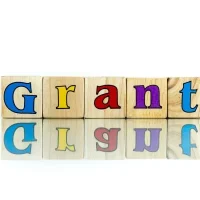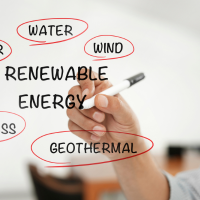Deadline: 24-Oct-2022
The Freelancer, in partnership with GEONOR, is running a contest with a total prize purse of $300,000 USD on behalf of Bureau of Reclamation, USDA Natural Resources Conservation Service (NRCS) and NASA Tournament Lab.
The Counting Every Drop Challenge seeks solutions to improve designs for ground-based precipitation measurement devices (precipitation gauges) that will be used to better inform water management decisions critical for human safety and environmental health, including forecasting, water supplies, monitoring water-year precipitation, controlling floods, and planning for irrigation needs.
Funding Information
- The Total Prize is $300,000
- The total Phase 1 prize purse is $80,000 USD.
- The total Phase 2 prize purse is $220,000 USD.
- Phase 2 Preliminary Review: up to $75,000.
- Phase 2 Pre-shipping Review: up to $15,000.
- Phase 2 Final Review: up to $130,000.
The Challenge
Water resources managers rely on ground-based precipitation measurements to monitor basin conditions and support streamflow, water supply, and flood forecasts. These forecasts, in turn, inform water management decisions ranging from water allocation to flood control to environmental restoration. Despite the critical importance of precipitation gauges for water resources management, current precipitation gauges are subject to several challenges and limitations related to operation and maintenance (O&M) requirements and data accuracy and reliability. The Counting Every Drop Challenge, seeks for new or improved designs for ground-based precipitation measurement devices to address measurement limitations of existing precipitation gauges, including measurement accuracy, resolution, and stability, and to address operations and maintenance (O&M) challenges of existing precipitation gauges.
Phases
The challenge will be run in two phases with a total prize purse of $300,000.00 USD.
- Phase 1
- To participate in Phase 1, Competitors (whether an individual or team or anyone acting on behalf of an individual or team) must submit a white paper describing their proposed precipitation measurement device and how it will satisfy the requirements. Up to eight Competitors will be awarded $10,000 and move forward to Phase 2.
- Phase 2
- In Phase 2, Competitors will complete their prototype which will be lab and field tested. A preliminary review during Phase 2 will allow Competitors to show the progress they’ve made on their prototype through a written description and a video demonstration. Up to five Competitors that show the ability to complete their prototype and meet the challenge requirements will be awarded a Phase 2 interim prize of $15,000 to continue work on their prototype.
The Competitors moving forward will have the opportunity to work with a Subject Matter Expert (SME) who will advise Competitors in product and business development. Prior to sending the prototypes for testing, Competitors will have a virtual meeting with Reclamation and NRCS to demonstrate installation and operation of their prototype.
Competitors with prototypes that are ready for the field will ship their prototypes to NRCS for lab and field testing and receive a $3,000 milestone award. Prototypes will be deployed in the field alongside a benchmark device for at least eight months. One solution that meets the requirements and doesn’t require fluids to operate will be eligible for a $100,000 prize. All solutions are eligible for a share of the $30,000 innovation awards. If there are no fluid-free designs, the prize amounts will be redistributed.
Solution Requirements
- The solution must meet all the required criteria. The solution will be judged on how well it meets the other criteria.
- A solution must:
- Be able to measure all forms of liquid and solid precipitation.
- Cannot discharge anything into the environment except water; cannot discharge a mixture of precipitation and any other fluid including antifreeze or oil.
- Use a 12V DC power supply Output data compatible with widely used dataloggers: SDI-12, pulse count, 0-5V signal, or analog output. Must be stored in .csv format.
- A solution should:
- Decrease the maintenance load due to fluid replacement.
- Fluid-free design, or
- Significantly limit the volume of fluid that must be replaced or disposed of during regular maintenance.
- Provide measurements at least once/hour.
- Measure at a resolution of 0.1″ (2.54 mm) or less under all field conditions.
- Accurately measure 0.1″ (2.54 mm) at +/- 5% under all field conditions.
- Minimize or eliminate fluctuations in precipitation readings during periods without precipitation (fluctuations must be < 0.25” (6.35 mm) over a 24-hour period without precipitation).
- Need to be maintained less than or equal to once/year. May not require maintenance be done at a specific time of year.
- Run on 2 100 AH batteries or the equivalent for one month without solar input
- Function reliably under extreme environmental conditions.
- Function at extreme temperatures; must function between -40C and 50C.
- Function during extreme precipitation events (high rain, rime).
- Not break down with high UV exposure.
- Accurate under high wind loads.
- Be easy to install
- Doesn’t require specialized structure.
- Doesn’t or cause major environmental impact.
- Can be installed by 2 people in 1 day.
- Easy to calibrate in the field or by swapping out components.
- Decrease the maintenance load due to fluid replacement.
Eligibility Criteria
For all Competitors, general eligibility requirements include:
- Competitors may not be a Federal entity or Federal employee acting within the scope of their employment.
- Competitors may not be an employee of Reclamation or a competition partner employee.
- Federal employees acting in their personal capacities should consult with their respective agency ethics officials to determine whether their participation in this Challenge is permissible.
- A Competitor shall not be deemed ineligible because the individual or entity used Federal facilities or consulted with Federal employees during this challenge if the Federal employees and facilities are made available to all Competitors on an equitable basis.
- Government contractors or recipients of government funding working on the same or similar projects are ineligible to participate in the Challenge.
- If you work for a Government contractor and this solution was made either under a Government Contract, Grant or Cooperative Agreement or while performing work for the employer, you should seek legal advice from your employer’s ethics agency on your conditions of employment which may affect your ability to submit a solution to this Challenge and/or to accept award.
- Government contractors receiving Government funding for the same or similar projects, are ineligible to participate in the Challenge.
- Competitors may not be working with Federal government as a CRADA collaborator if the statement of work of the CRADA includes the subject matter of the challenge or if the CRADA provides the Competitor with a competitive advantage.
- Any individuals (including an individual’s parent, spouse, or child) or private entities involved with any aspect of the design, production, execution, distribution, orb evaluation of the Challenge are not eligible to enter as an individual or member of a team.
- Special eligibility requirements:
- Individuals currently receiving Federal funding through a grant or cooperative agreement unrelated to the scope of this challenge are eligible to compete but may not utilize that Federal funding for competing in this challenge.
- By participating in a Freelancer.com contest, each Competitor must agree to and abide by the following: Freelancer Eligibility Policies, Freelancer User Agreement, and the
- Freelancer Copyright Infringement Policy.
- Each Competitor must complete and comply with the Freelancer “Know Your Customer” (KYC) process.
- Prior to receiving awards, Competitors must complete the Freelancer.com handover process.
For more information, visit https://www.freelancer.com/reclamation/counting-every-drop








































